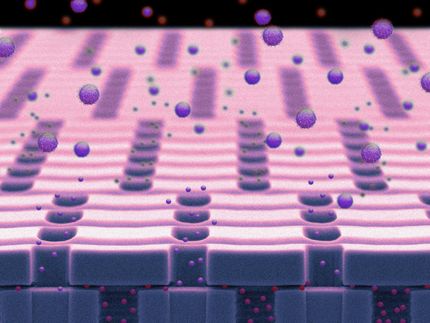Immune memory formation seen in early stages of viral infection
Advertisement
In an acute viral infection, most of the white blood cells known as T cells differentiate into cells that fight the virus and die off in the process. But a few of these "effector" T cells survive and become memory T cells, ensuring that the immune system can respond faster and stronger the next time around. Scientists have identified a molecule that defines which cells are destined to become memory T cells just a few days after a viral infection begins. The finding could guide the development of more effective vaccines for challenging infections such as HIV/AIDS and also cancer.
The results were published by Immunity. The senior author is Rafi Ahmed, PhD, director of the Emory Vaccine Center, a Georgia Research Alliance Eminent Scholar and a member of the National Academy of Sciences. Working with Ahmed, postdoctoral fellows Vandalia Kalia and Surojit Sarkar tracked memory T cell formation in mice infected with lymphocytic choriomeningitis virus, a virus that causes an acute infection. They observed that a few days after infection begins, T cells separate into two groups: one with high levels of the molecule CD25 on their surfaces and one with low levels of CD25. Later on, all T cells reduce their levels of CD25 and the differences disappear as the infection is cleared.
"The outstanding question in our field has been: when do T cells commit to becoming memory cells," Kalia says. "This is one of the earliest points where we have been able to see these groups of cells with distinct fates."
CD25 is a molecule on the outside of cells that allows them to respond more sensitively to interleukin 2 (IL2), a growth factor that stimulates T cells. IL2 regulates immune activation. The most commonly used drugs to control the immune systems of transplant patients tamp down production of IL2. During viral infection, cells with more CD25 respond to IL2 more strongly and produce more battle-ready progeny, but they don't stick around. Cells with low levels of CD25 are five times more able to persist long-term, and they also acquire the ability to travel throughout the body's lymph nodes — key properties of memory T cells compared to effector cells.
"Apparently, cells that receive prolonged IL-2 signals are pushed further down the effector path and hence exhibit decreased potential to form long-lived memory cells," Sarkar says. "It may be beneficial that not all of the T cells burn themselves out fighting the virus so that memory-fated cells can conserve resources for the next encounter."
When mice are given extra IL2, T cells exhibit more pronounced effector characteristics. Sarkar says the results will be instructive for researchers developing vaccines because, combined with previous observations in the field, they show that both too much IL2 and its absence can be detrimental to the development of immunological memory. Because IL-2 is a key regulator of the immune system, some clinical studies have examined whether IL2 can boost immune responses against HIV and cancer, for example.
The differences between the groups of T cells may arise because not all T cells get the same level of stimulation as the infection progresses, Kalia says. "In this situation, a spectrum of effector cells with a range of differentiation states and memory potential likely develops," she says.



























































